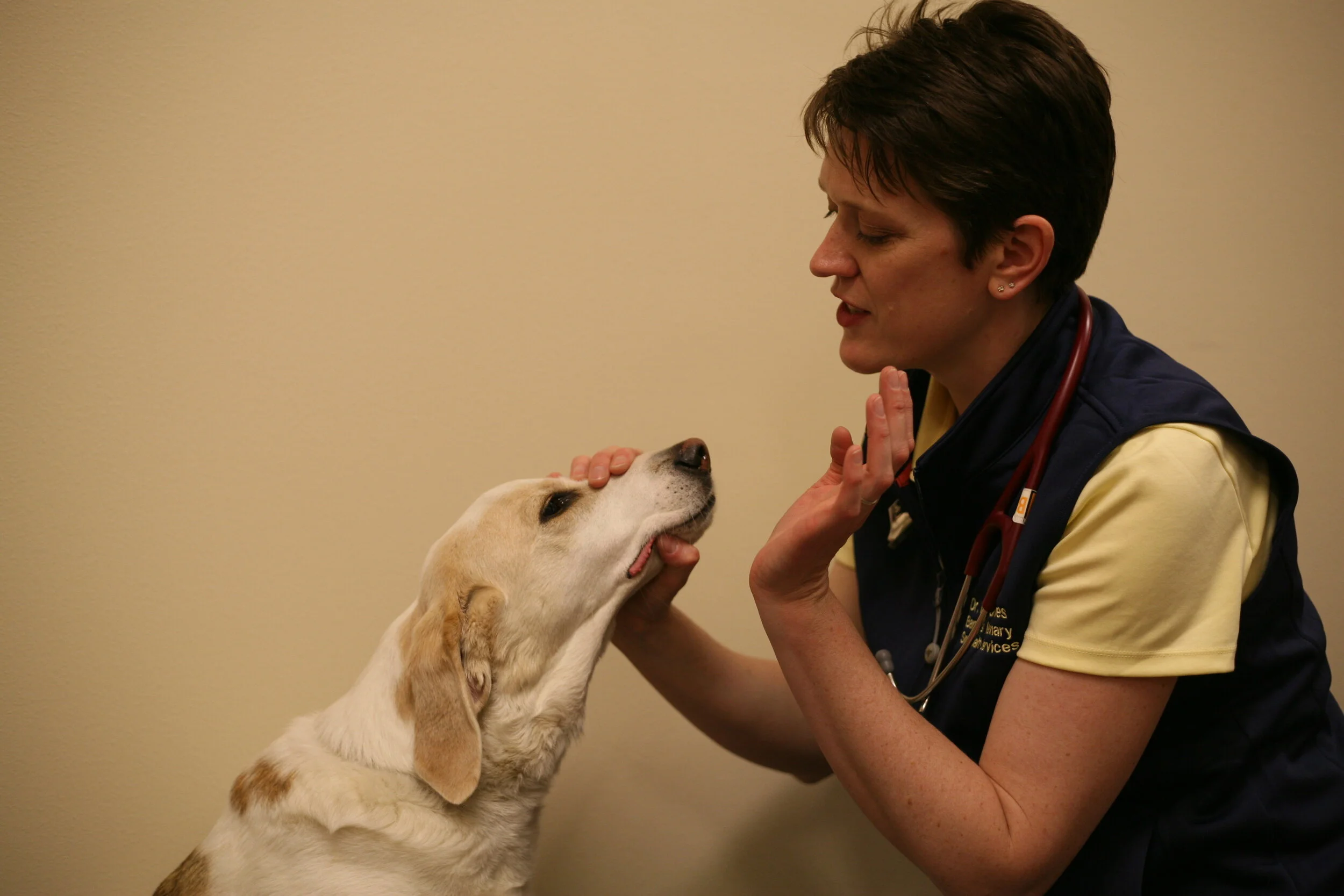Idiopathic Head Tremors vs. Focal Seizures
Wow, a lot of you have been seeing head tremors lately and sending them my way! I thought we could take this TidBit Tuesday to look more closely at Idiopathic Head Tremors and compare/contrast to seizures. Please read or skip to the end - there is a plea for data collection and I need your help!
What are Idiopathic Tremors?
Good question!
Tremors are action-related in veterinary medicine.
Two classes are: Postural (example is orthostatic tremor, idiopathic head tremors, and hypomyelination) and Kinetic (Intention tremors with cerebellar disease, others)
Postural tremors happen NOT AT REST. Meaning, the body part isn't supported by the ground/bed/etc. If it is, the tremor stops.
Further, idiopathic head tremors STOP WITH MOTION. Distract the dog, get it walking, eating, etc, the movement stops.
Kinetic tremors DO NOT STOP WITH MOTION. They get worse. The classic example is a cat with cerebellar hypoplasia. As they move, the tremor becomes more obvious. This is a kinetic tremor.
So, what causes idiopathic head tremors? We...ahem...don't know. They are classified as a movement disorder but that means it could be from CNS or PNS lesion localization. Movement disorders are a huge box of diseases that are lumped together but may be anything associated with specific movements, or not. There is a really nice, recently published article by Dr. Mark Lowrie that outlines the different types of tremors if you'd like to read more.
(https://bvajournals.onlinelibrary.wiley.com/doi/epdf/10.1002/inpr.3)
How do you differentiate tremors from seizures?
Look for classic evidence of seizures such as autonomic signs, changes in mentation or a lack of stopping when moved, distracted or completely recumbent. Even the head must be recumbent for idiopathic head tremors to stop.
How do you diagnose idiopathic head tremors?
I'm sorry to say that we don't have any diagnostic tests available to make the diagnosis. Also, it is idiopathic, so even if we do brain MRI/CSF all testing is normal. There is a suspected genetic sire in Doberman dogs that idiopathic head tremors can be traced back to, but as of yet there isn't a genetic test available. Stay tuned.
Because we cannot reliably differentiate these from focal seizures AND seizure disorders can be progressive and life-limiting if left unchecked AND some movement disorders do respond to anticonvulsant drugs I always, always, recommend doing a trial of an anticonvulsant medication before simply stating that they are a movement disorder and ignoring them.
One of the tenants of idiopathic head tremors is that they don't respond to anticonvulsant medications but please read this line cautiously. Up to 30% of dogs and cats with seizure disorders do not respond to anticonvulsants (1 or multiple) either so a lack of response to anticonvulsant drugs still does not rule out a seizure disorder.
If the animal has autonomic signs (drooling, lacrimation, urination, defecation, vomiting) concurrent with the movement, they cannot be distracted easily from the movement OR it is present at rest consider this a seizure disorder and keep trying to treat. Or call your local, friendly, mobile neurologist.
DATA COLLECTION
I am looking into the seasonality of head tremors. If you have a case that you have seen with a postural tremor, such as a head tremor, (not cerebellar animals) please consider filling out the short form found online to contribute data to this study. It shouldn't take long to fill out. If you've sent me an email about a tremor, please consider filling out the online questionnaire so I have your permission to include your data. Thank you!!
Link:https://barnesveterinaryservices.com/head-tremor-database
Password: VET2021
I am here to help you, help your patients, live their best lives with neurologic disease. You don't need to be "good" at neurology - that's my job - you just need to be willing to advocate for your patient!
Stay safe. I look forward to working with you soon!


